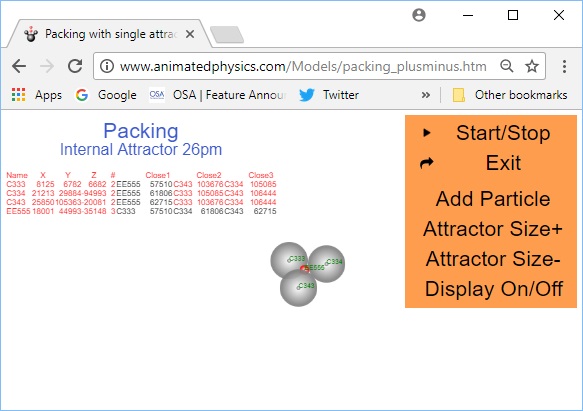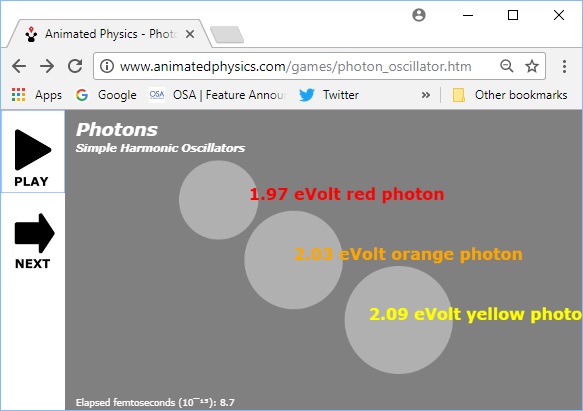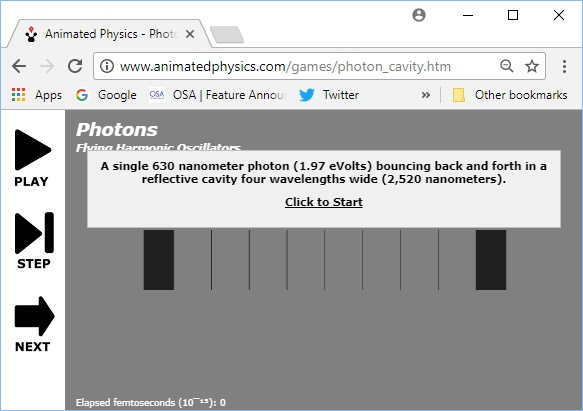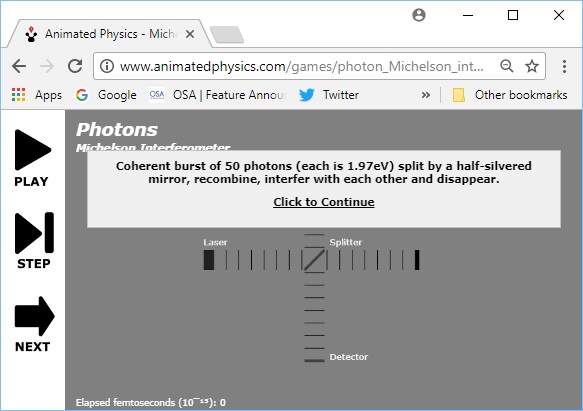Games people play, what they do and where to find them
 Shoot the Electron
Shoot the Electron
Features: Runs live; multiple levels; and point accumulation
Description: Ionize Hydrogen; The goal is to separate the red electron from the proton shell by shooting electrons at it. Drag you cursor around the screen to aim the cross-hairs. Just like when playing pool or billiards you cannot hit the electron dead on. If you do, the bullet electron will act as a cue ball and end up staying in the place where you just knocked the electron out of. You must aim a little crooked to cause the bullet electron to fly off at an angle. The coulomb force, makes the electron act bigger then it looks.
http://www.animatedphysics.com/games/shoottheelectron.htm
 Hydrogen Shooting
Hydrogen Shooting
Features: Runs live; menu support; multiple levels; practice screen; and point accumulation.
Description: Collect points by dislodging the electrons from moving Hydrogen molecules. You get three shots over five femto-seconds.
http://www.animatedphysics.com/games/hshooting.htm
 Settle in Place!
Settle in Place!
Features: Runs live; add particle option; adjust particle size option; onscreen display option
Description: Somewhat random collection of particles coalesce around an internal attractor. You control the size of the attractor. Use your cursor to rotate image, CTRL+cursor to zoom.
http://www.animatedphysics.com/Models/packing_plusminus.htm
 Attraction up to a point
Attraction up to a point
Features: Runs live; selection of groupings to in 2d and 3d; molecule tracking by clicking on it;
Description: Each molecule repels other molecules within their gray exclusion zone (van der Waals radii). Molecules attract other molecules via the coulomb force outside of the exclusions zone. Watch the molecules settle into a pattern.
http://www.animatedphysics.com/Models/freezing_AttractionVsRepulsion.htm
 Simple Harmonic Oscillators
Simple Harmonic Oscillators
Features: Runs live; Series of panels highlight different wavelengths;
Description: Photon model consists of expanding and contracting bubbles flying through the air at the speed of light. Sub-femtometer time scale allows easy demonstration of harmonic behavior 1 to 10 evolt range where most visible photons reside. Planck’s constant (h) sets the relationship between wave length (λ) and energy (E), where energy is inversely proportional to wave length (E=h/λ).
http://www.animatedphysics.com/games/photon_oscillator.htm
 Flying Harmonic Oscillators
Flying Harmonic Oscillators
Features: Runs live; fixed photon energy; variable number of similar photons; some in phase, some not.
Description: Starts with a single 630 nanometer photon (1.97 eVolts) bouncing back and forth in a highly reflective cavity that is four wavelengths wide (2520 nanometers). When multiple photons are run you can see interference effects of “brightening”, “darkening” and “disappearing”.
http://www.animatedphysics.com/games/photon_cavity.htm
 Michelson Interferometer
Michelson Interferometer
Features: Runs live; beam splitter; variable length path; compensating plate option.
Description: Coherent burst of 50 photons (each is 1.97eV) split by a half-silvered mirror, are recombined and interfere with each other. The photons can be made to combine or interfere depending on distance travelled and or something in the path like a compensating plate.
http://www.animatedphysics.com/games/photon_Michelson_interferometer.htm